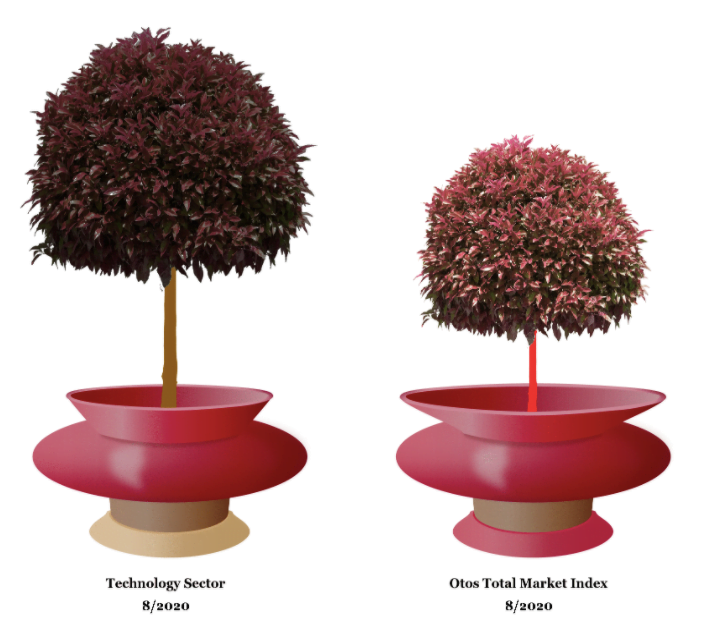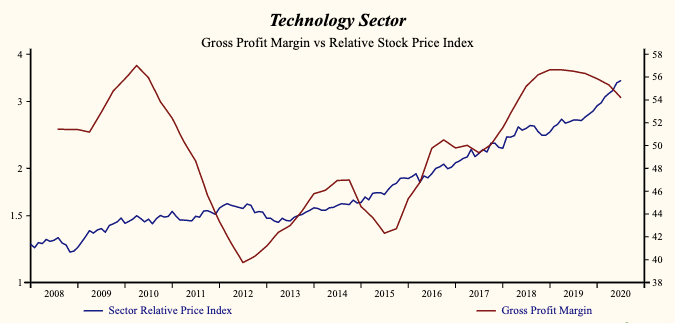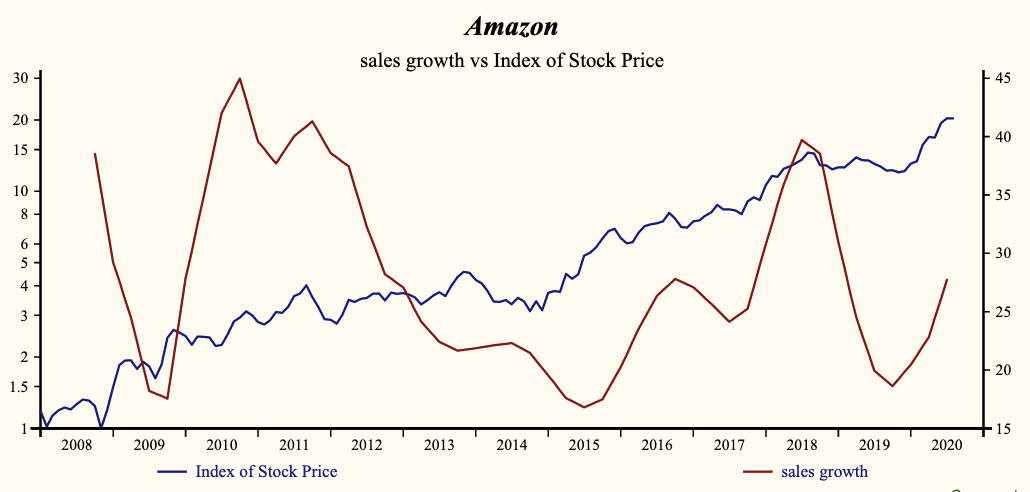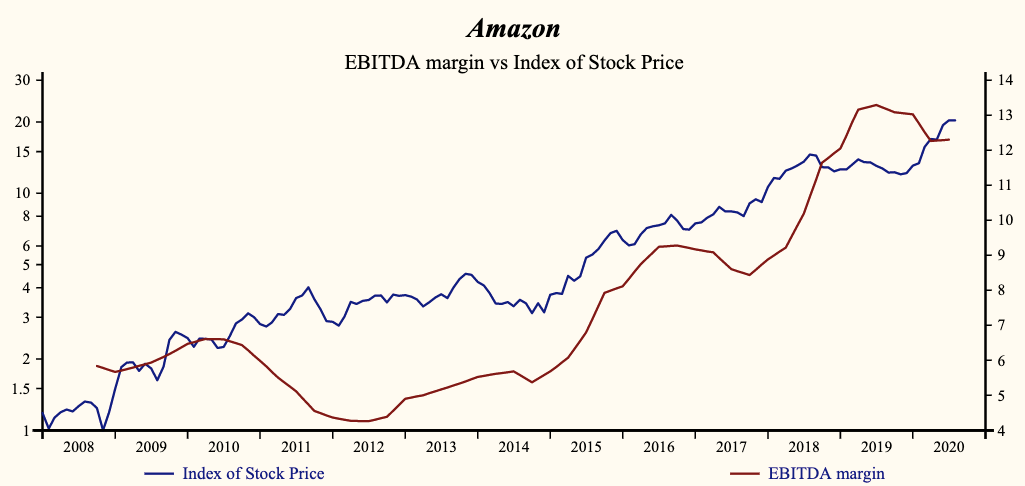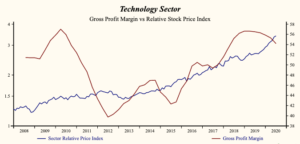
The recent SEC filing update of quarterly financial statements is now 90% complete. The volume of SEC filings will now start to decrease in coming weeks giving us the chance to take a high-level view of the Q2 data and potential trends.
Q2 2020 hedge fund letters, conferences and more
Top-Line Weakness
Corporate growth fell very broadly in the second quarter but not as steeply as we might have expected. Total market average sales growth fell to 5.7% (down from 7% last period and down 15% from the peak in the third quarter of 2018).
Average sales growth downtrend continues. The proportion of market capital accounted for by rising sales growth companies fell from 50% to 43%. Now, 75% of companies are reporting lower sales growth. Note, this does not include retailers as they will report their second fiscal quarters ended July in the next two weeks.
Average gross profit margin is down again and now standing at 55%. Significantly, 59% of total market capital is currently recording a decline. The operating profit margin (EBITD) continues to advance as companies aggressively reduce Selling General and Administrating (SG&A) costs to keep the EBITD profit margin rising while the gross profit margin is falling. This is a common response in the early quarters of a top-line slowdown and overstates corporate growth in the short term. Opportunities for cost reduction are soon exhausted and that is when top-line weakness hits cash flow growth hard.
Technology Sector Dominance
The technology sector dominated corporate growth to a greater degree. The sector average sales growth rate is more that 3 times the rate of non-tech companies and 34% of companies accounting for 66% of market capital are recording an improvement in sales growth. Improvement in sales growth is concentrated among the largest tech companies and Amazon (NASDAQ:AMZN) which has become such a large proportion of the sector that this one single company accounts for much of the improvement.
The average gross profit margin in the technology sector is down for the sixth consecutive quarter and more steeply in the recent quarter with 65% of market capital accounted for by falling gross margin companies. The shares of tech companies (including Amazon) have been very highly correlated with the direction of the profit margins. Again, earnings quality is poor as companies cut costs to shore up the operating margin in the face of a decline in the gross profit margin.
Get Rid of Falling Growth Companies
Rising company growth is very rare and negative cash flow (insolvency) is more common in the second quarter. It will be important as we work through the uncertain downturn and eventual recovery to avoid weak financial condition and falling cash flow. We have already seen an increase in bankruptcies among weaker companies.
The recent strong stock market advance to a new record high is mostly the result of lower bond yields. Nevertheless, the recent rally in share prices provides an opportunity to sell falling growth companies at extended share prices.
Investors do not wait. Act now!
Buy stocks of companies with sales growth up, rising gross profit margins, lower SG&A expense and good financial condition (Stable Golden Pot) and improving cash position or profitability (Green Crown of the MoneyTree). In other words, the more stable the pot appears, the better the attributes. Green and gold are good. Red is bad and the more intense the red the more urgent the call to action.
The post Technology Sector Dominance in Q2 Data appeared first on ValueWalk.

